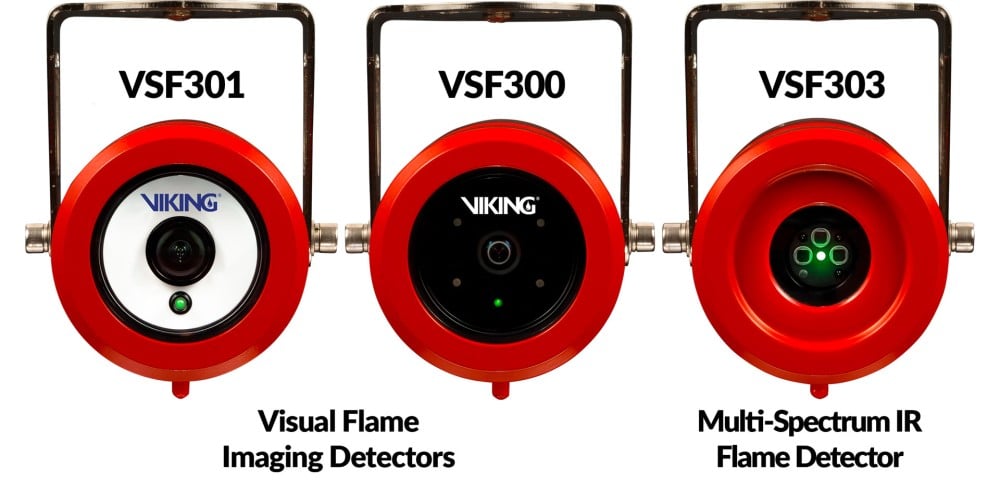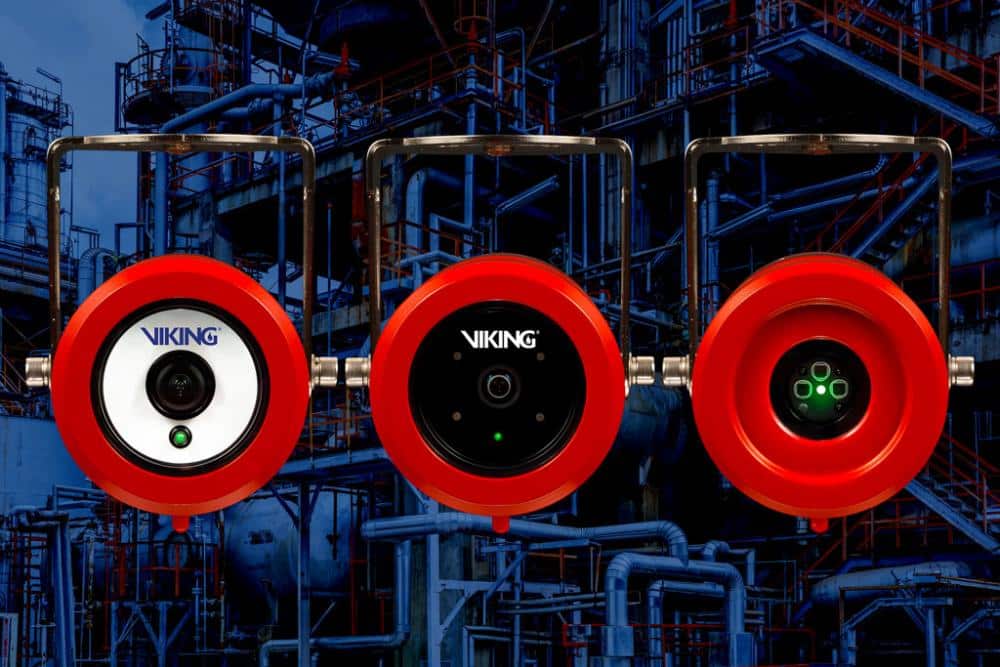Before any fire alarms can sound or fire suppression systems can activate, something must identify that a fire is actually present. In many cases, that “something” is a flame detector.
Below, we’ll talk about what a flame detector is, what types are available, and how to determine which one may be best for your facility.
What Is a Flame Detector?
A flame detector is your facility’s first line of defense against a fire. It’s a sensor that’s designed to detect the presence of a fire right away, so you can respond as quickly and appropriately as possible.
Typically, a flame detector will not only detect the presence of a fire, but also prompt your fire protection and suppression systems to trigger. This could include any of the following:
- Sounding fire alarms
- Alerting your central station monitoring system and local first responders
- Activating your fire suppression systems (extinguishers, sprinklers, etc.)
- Deactivating your gas and fuel lines
4 Common Types of Flame Detectors
One important thing to know about flame detectors? Not all flame detectors are created equal. There are many different brands and models on the market — and while they all work to accomplish the same goal of detecting fires, they operate, perform, and respond to particular hazards a bit differently. It’s important to know the details about each of them, so you can choose the one that best suits your facility’s needs.
Let’s take a look at five of the most common types of flame detectors below.
1. Ultraviolet (UV) Flame Detectors
Ultraviolet (UV) flame detectors detect UV radiation the second a fire is ignited. Since most fires transmit UV radiation, these detectors are a good, tried-and-true option for many facilities. They’re also especially useful for facilities that are prone to specialized hazards like hydrocarbon, halogen, and metal fires.
UV flame detectors offer great sensitivity at short distances, around 0-50 feet. However, their performance is known to decrease at any length past that. They’re also known to react to electrical discharges like lightning, so they’re best kept in an indoor environment.
2. Infrared (IR) Flame Detectors
Infrared (IR) flame detectors observe IR radiation. Hot gasses that are emitted by fires produce unique patterns in IR wavelengths, which can be caught on a thermal imaging camera within the detector. That said, IR flame detectors require the flickering motion of a flame before they can sense and respond to a fire.
IR flame detectors are also habitual offenders of false alarms. This is because other hot gasses and surfaces not caused by a fire (ovens, heat lamps, etc.) can trigger their response.
3. Ultraviolet/Infrared (UV/IR) Flame Detectors
Ultraviolet/infrared (UV/IR) flame detectors integrate sensors for both UV and IR radiation. The two sensors operate separately, as described above. However, some added circuitry and wiring helps the detector process and evaluate both signals. This helps dispel any false alarms that one signal or the other may provoke.
This boosted immunity to false alarms allows UV/IR flame detectors to be used in both indoor and outdoor applications. However, it does limit fire detection to include fires that only emit both UV and IR radiation.
4. Multi-Spectrum Infrared (MSIR) Flame Detectors
Multi-spectrum infrared (MSIR) flame detectors use many infrared wavelengths to further distinguish flame-producing radiation from non-flame-production radiation sources. They’re capable of responding quickly to fires within a distance of up to 200 feet, both indoors and outdoors.
MSIR flame detectors are also capable of detecting flames even amidst the smokiest of fires, and they’re not likely to cause false alarms due to lighting, sunlight, or other hot objects in the surrounding environment.
5. Visual Flame Imaging Flame Detectors
Visual flame imaging flame detectors use charged couple device (CCD) image sensors to identify the presence of a fire. These sensors process the live video from the CCD to analyze possible fire sources’ shapes and growth, which helps them distinguish whether or not it’s an actual fire hazard.
One advantage of this type of flame detector is that it doesn’t rely on the emission of carbon dioxide or other combustion products to detect fires. But one disadvantage is that they’re not capable of detecting fires invisible to the human eye, like hydrogen flames.
How to Decide Which Flame Detector Is Right for Your Facility
Since there are so many options out there, it can be difficult to know which type of flame detector is the best choice for your facility. Your best bet is to speak with a fire detection specialist, like our team at Vanguard. They’ll be able to listen to your specific needs and unique fire hazards, then recommend a good solution.
But to give you a clearer idea of what type of flame detector you might need, there are a few main things to consider, including:
- Your facility’s unique fire hazards & the type of radiation those fires emit
- Your facility’s environmental conditions
- Your facility’s size (or the dimensions of the protected area)
- The importance of flame detector response time to your facility
- The importance of flame detector false alarm rejection rate to your facility
Get State-of-the-Art Fire Detection Systems From Vanguard
Regardless of your industry or application, your facility needs adequate fire protection — and that starts with fire detection. At Vanguard Fire & Security Systems, we can help you find a high-quality flame detector that works for you. Some of our best-in-class solutions include:

Photo courtesy of Viking Integrated Safety.
Our mission is to keep your property, products, and people safe. For more information on how we can help, contact us online.

